Starting a homestead is an exciting process. Learning to be more self-reliant and produce your food and energy on the land you live on is rewarding.
Everyone from the city to the country can start a homestead, whether it is fully self-sufficient or not, however some people don’t have the luxury of a large plot, and aren’t sure whether this is a good idea.
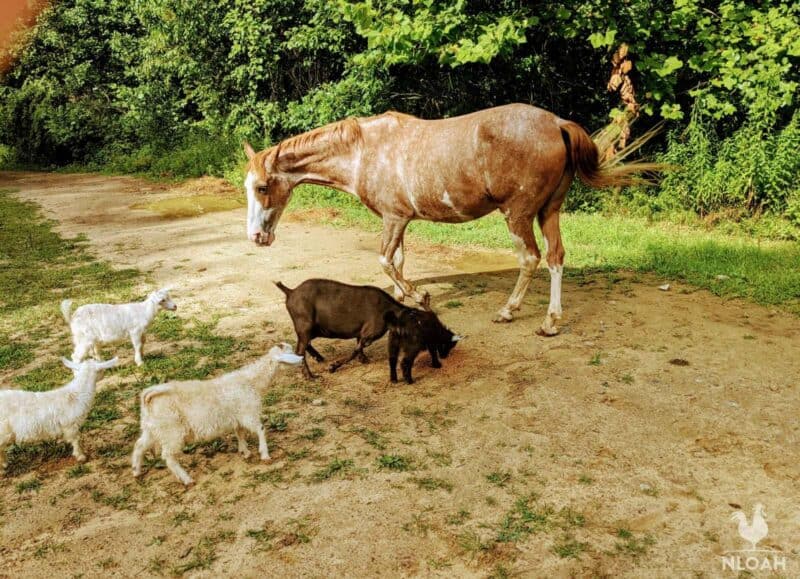
So how much land do you need to start a homestead?
Around 1 acre per person on the homestead is recommended for full self-sufficiency.
Gardens require up to an acre. Small livestock, like chickens, requires up to 25 square feet per animal. 5-6 pigs can graze per acre, or small ruminants. Large ruminants need an acre per head.
Homesteading By Land Size
Let’s dig a little deeper to see what you can and cannot grow and raise depending on the amount of land you have at your disposal.
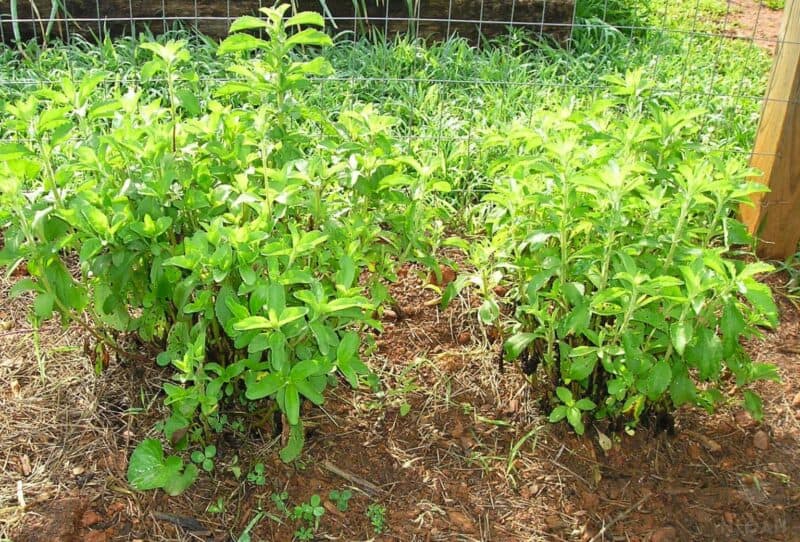
Up To 1 Acre of Land
Those with city plots of land and suburban dwellers will typically fall into this category. This category is usually referred to as Backyard Homesteaders. Achieving full self-sufficiency isn’t always possible, but you can still do a lot!
A garden can be up to a half-acre on this size of land, and it will be your main source of food. Growing lots of varieties of fruit and vegetables, using succession plantings, vertical gardening, and growing year-round will increase productivity.
Having dedicated storage space to preserve your garden harvests in your house is easy enough and doesn’t require extra space in most cases.
Urban homesteaders will can, freeze, ferment, and dehydrate their food produced on their land in their kitchen. Storing it is as easy as a pantry and freezer, requiring no extra land!
A homestead has many different systems. A garden is great, but a garden alone isn’t a homestead, it’s just a garden!
For livestock, you’ll be limited to smaller animals, like chickens and rabbits. Chickens are typically recommended because they’ll give you eggs and meat.
You can fit 10-15 chickens in a 250-square-foot pen. This size is recommended to avoid health issues from overcrowding or fighting due to lack of space.
Raising chickens for meat can be done year-round in small batches instead of doing one huge batch per year. This will reduce the amount of land needed as well.
On a small plot of land, you can still produce most of your power needs as well by using solar panels on the roof, passive solar room heaters in the windows, passive solar water heaters on the sun-facing side of the house, and human-powered washing machines. None of this requires more land!
Sunny windowsills make great mini gardens or greenhouses. Growing herbs and spices and starting seedlings inside the house requires no extra land but will help you produce more on your urban homestead!
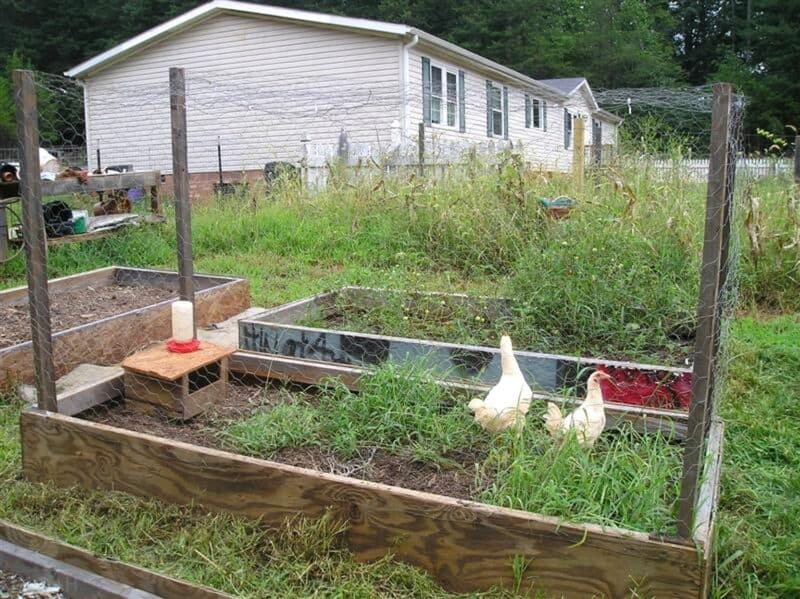
1-3 Acres of Land
With this size, you can expand your garden and small animal pens a bit as well. You can also add in small ruminants, pigs, or a mini fruit and nut orchard.
Small ruminants, like Goats and Sheep, don’t require a lot of land. Each acre can support around 5-6 animals.
Pigs also don’t require a lot of land. Many feeder pigs only require about 100 square feet for optimal growth.
However, you will be hard-pressed to find a city lot that will allow pigs, due to their smell and rooting nature that can destroy landscaping. If you are in a rural area but still have a small homestead, pigs are an obvious choice for meat production.
Orchards take up a lot of space since each tree needs to be spaced 20-30 feet away from the next. An acre can fit around 70 trees of different varieties of fruits and nuts, all which can feed you and your animals.
You can stack systems at this time and create silvopastures. The trees may be spaced a bit further to allow for more sunlight to the ground between the trees and the ruminants graze the orchard area.
Protecting the trees from the animals may require metal or electric fencing, but it allows you to do more on less land. An acre could have around 50 trees and 5-6 goats!
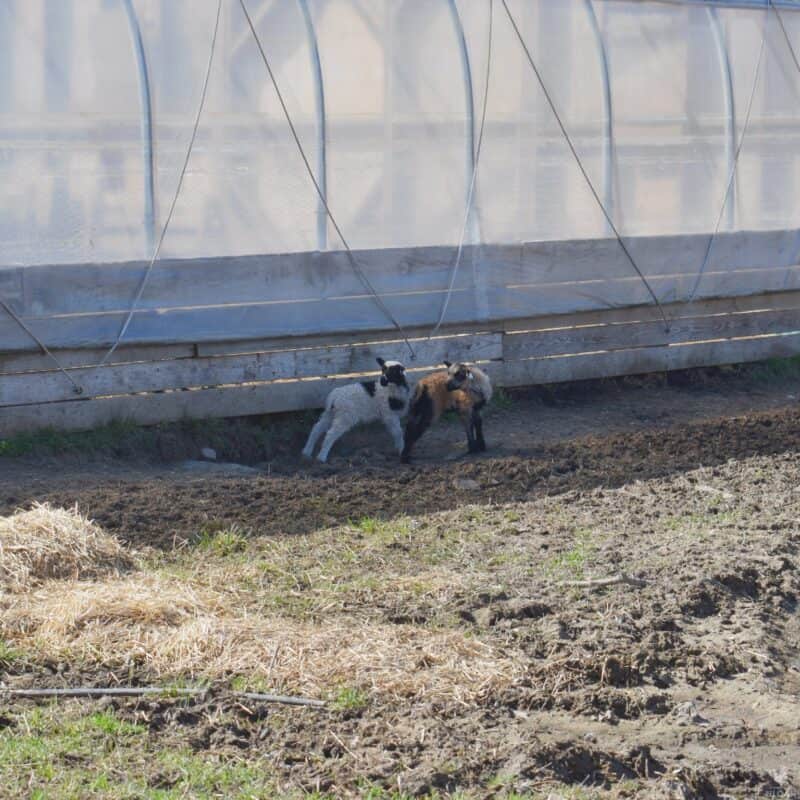
3-5 Acres of Land
At this size, you can expand on everything from the smaller size homesteads above and add in a couple of large ruminants.
Large ruminants require around 1 acre of land per head if you want healthy grass-fed meat and dairy products.
You can also support a larger variety of livestock. With 3-5 acres you can:
- Garden up to an acre
- Chickens and Rabbits on a half-acre
- Pigs on a half-acre
- A silvopasture of 50 fruit and nut trees and 5-6 Sheep or Goats on one acre
- Another acre for a large ruminant animal, which could also rotate into the silvopasture
- The rest of the area for your house
At this point, you can achieve self-sufficiency with food production.
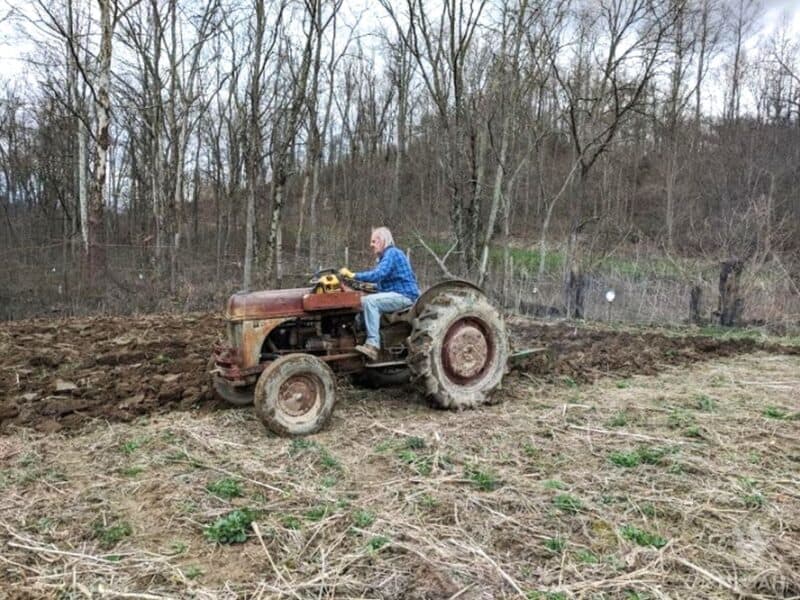
5-10 Acres of Land
Expanding to this size allows more room for all the animals to graze, creating less demand for external food input.
You can also expand your ruminant herds to include more breeding stock or just more feeders.
At this point, you may be able to start thinking about selling some of the excesses that you can create, whether it be fruit, vegetables, meat, or dairy products.
You could also start a small orchard for firewood with fast-growing trees like Eucalyptus. Depending on your winter climate, this size may be enough for all of your firewood needs, especially if you use passive solar room heaters on cold, but sunny days.
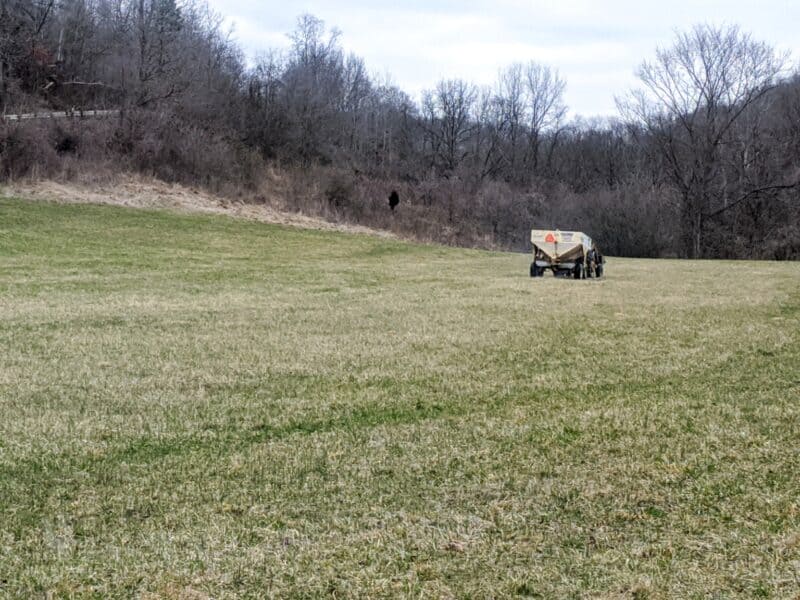
10+ Acres
This size is much more than one household needs to be self-sufficient. But, at this size, even your livestock feed can be grown on-site.
More land means more grass for the ruminants. You can set aside a few acres for hay production to store and feed during the winter months.
You can plant various nut trees to create a forest setting for your pig operation that gives them a natural environment while providing them with high-quality food like walnuts, almonds, and acorns.
You can grow all the food needed for your chickens and rabbits in a larger garden.
What Kinds of Plants Can You Grow on a Small Parcel of Land?
The beauty of homesteading is that it can be adapted to fit whatever land resources you have. If you only have a tiny plot, less than an acre, you can still grow a massive garden that provides plenty of food for your family throughout the year.
Whenever possible, focus on growing crops that require minimal resources and a minimum amount of space. Some high-calorie plants you might consider growing are:
- Corn
- Potatoes
- Wheat
- Peas
- Peppers
- Beets
- Beans
- Tomatoes
Yes, things like corn and wheat do take up more space than greens and beans. However, they store well and give you more nutritional bang for your buck in regard to calories, so keep that in mind.
As far as growing fruit goes, know that fruit trees and bushes will almost always take up more space than vegetable plants. With that said, there are dwarf tree, bush, and vine options for just about every kind of plant, allowing you to grow compact versions of your favorite plants.
Whether you prefer grapes, apples, or pears, there’s probably a dwarf version that you can grow to support your off-grid lifestyle.
Don’t Forget About Zoning
Something that many people don’t take into consideration when trying to build a self-sufficient homestead to grow their own food is zoning.
Often, the amount of acreage you have isn’t the limiting factor when it comes to a homesteading lifestyle – it’s zoning restrictions.
In some places, you cannot have a chicken coop – period. In others, only hens are allowed. Some areas, like HOAs, have restrictions on the planting of a vegetable garden.
This can be frustrating and it’s something you likely wouldn’t consider when starting out. However, it’s important to research any and all zoning laws where you live to make sure you can do exactly what you want to do without getting in legal trouble for it.
Tips for Making the Most of Limited Space as a Homesteader
You can make the most of a small piece of land and become self-sufficient with some simple tips.
Garden Planning
The first tip is to plan your garden carefully. If you are limited on space, it is important to maximize the amount of food you can grow in the area available. Research which plants will give you a higher yield in limited space (ideally, even those that can be grown in containers, since these can be brought indoors when your outdoor space becomes more limited).
The plants I listed earlier in this post, like tomatoes, are all good options for high yields, but also look into zucchinis, cucumbers, beets, spinach, and potatoes.
Also, consider growing fruits that take up less space like strawberries or blueberries. Once you have decided which plants you want to grow, create a soil bed for each one and make sure they are spaced properly so they get enough sunlight exposure.
Composting
Composting is an essential part of any homesteading operation because it helps turn kitchen scraps into fertilizer for your garden beds.
To help conserve space on your small property, create a compost bin that hangs off the side of your house or garage wall, so you don’t need to use valuable real estate on the ground for it.
Raising Animals
You may not have room for an entire barn full of animals on your small property—but with careful planning, you can still raise some livestock or poultry even if space is at a premium.
Again, chickens work well in smaller areas because they require relatively little space compared to other animals like cows or goats; they also provide eggs as an additional source of food for your family!
Regardless of which types of animals you choose to raise, do some research on which breeds will work best for limited space – that way, you can optimize the amount of space you have available.
For example, Icelandic sheep are often preferred for smaller lots because they are not finicky grazers – they will eat everything from traditional forage to forbes. Bantam chickens and dwarf goat (pygmy) breeds also work well for this purpose.
It’s impossible to give an estimate on how much space you need to raise these sorts of livestock, since it depends not only on the type of animal and the breed but also on the quality of the land in addition to the quantity.
While you can raise a flock of five or six sheep on just an acre or two, that acre needs to have high-quality forage that will ensure the health of your animals and limit the spread of disease.
Benefits Of More Land
More land can be more beneficial for food production for your livestock. Small homesteads can house a lot of livestock, but much of their food needs will still be purchased off the farm.
Larger plots of land allow for more free-ranging. This means more food is available on the land for the animals already. With larger plots, you can get large livestock, like cattle, and grow orchards for firewood.
More land also opens the possibility of turning your homestead into an income generator. If you are self-sufficient with food and power, what better way to expand than becoming self-sufficient with money on your farm? Everything you do to produce food for your household can be done to produce income as well!

Milo Martinovich was born and raised in a small town in Northern California. Throughout his life, he has been involved in agriculture and now lives on a 7-acre homestead raising livestock and growing food for his family. Self-sufficiency is his ultimate goal.

I had thought a homestead was 160 acres. Where do you get wood wildlife ect ,,,,,,,,other than a gatden and a few sheep
Very good article. One thing I would add is the terrain and features of the land will determine how much usable acreage you actually have. I live on 12 acres in the north GA mountains and about half is not suitable for crop growth due to a mountain on the NE-SE side that blocks much of the sun especially when the leaves are on the trees and a large spring area in the bottom land. The mountain is above my property line so I cannot cut the trees. Also there are several very steep rock outcroppings that would be fine for sheep and goats but fencing would be a challenge if at all possible. Useful acres and total acres may not always be the same.
You speak to land quality not being equal, and that seems to be ignored in most of these articles. Its apparent to me that most people who write these, while perhaps knowledgeable in their area, dont realize that their expertise doesnt travel far. An acre in the Arizona desert is different from an acre on the Nebraska plains which is nothing like an acre in Maine. The best experts are the people who have to make a living off of it. Talk to area farmers for a solid idea of what the land can produce and what it takes to do it.